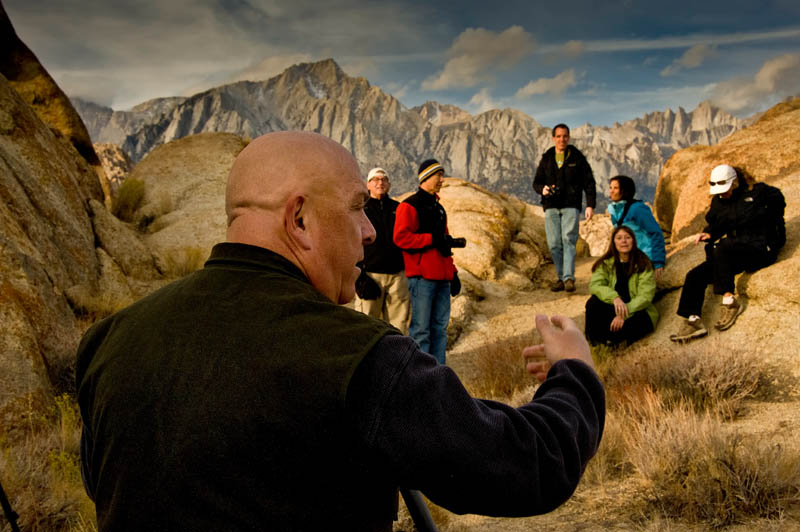 Jack Graham Photography www.jackgrahamphoto.com
Jack Graham Photography www.jackgrahamphoto.com
Learn to See Learn to think Learn to create
2012 Workshop Schedule https://www.jackgrahamphoto.com/2012-workshop-schedule — WORKSHOPS FILLING FAST —!!
2012 Registration Form REGISTRATION FORM 2012v9
Workshop Referrals: https://www.jackgrahamphoto.com/referrals
One on One, Individual Workshop information https://www.jackgrahamphoto.com/one-one-field-studio-photography-workshops
Workshop FAQ’s GENERAL WORKSHOP QUESTIONS_FAQ’S INFORMATION_v2012f
PODCAST: www.18percentgraymatter.com new podcast ready now—interview with Laurie Rubin, NIK SOFTWARE
2012 Workshop Locations incliude the desert southwest, Olympic National Park, Columbia River Gorge, Fall Color in Oregon’s Wine Country & Area, Northern California
http://www.pacificnorthwestartschool.org/all/photography-workshops/graham-jack-fall-in-northern-ca-sep-20-23-2012-1 and Whidbey Island, Wa http://www.pacificnorthwestartschool.org/all/photography-workshops/graham-jack-photography-on-whidbey-may-9-12-2012-1 with the Pacific Northwest Art School…. Tetons & Yellowstone, Wyoming Big Horn Sheep in December…. please check out the details here: https://www.jackgrahamphoto.com/2012-workshop-schedule
My fall workshop with Guy Tal www.guytal.com in the Eastern Sierra is almost full there are a few spaces left. This workshop is almost at capacity. https://www.jackgrahamphoto.com/17th-annual-eastern-sierra-photography-workshop-mono-lake-alabama-hills-bristlecone-pine-bodie-more Register NOW! ( Check out Guy’s E=Books as well !!)____________________________________________________________________________
Jack Graham E-Book Series 1 & 2 now available for purchase and instant download:
https://www.jackgrahamphoto.com/shop/e-books
Noteworthy Use code JGRAHAM when ordering NIK SOFTWARE on line and receive a 15% discount!!!!
Recently I recorded a webinar at the NIK SOFTWARE Headquarters in San Diego. I would like to thank the folks at NIK Software, especially Laurie Rubin and Dan Hughes for making this possible. You can view the entire webinar here: http://www.niksoftware.com/learnmore/usa/index.php/webinars/archives/#/keeping-it-simple-with-nik-software-with-jack-graham/0/0/0/0/0
I just returned from my spring workshop in Death Valley. We had great weather right up until the last few hours when a bad dust storm blew through. We had good sunsets and sunrises. We had an exceptional group of attendees as well. I’ll be back in Death Valley in early November and have a few spaces left.
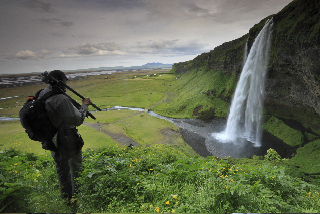 Speaking of spaces, I have only one space left for Ultimate Iceland in July 2012. If you are thinking about this trip, please consider coming along. You will be in for an exceptional experience, feathering 10 full days ( I don’t count travel days like some other workshops do!) of photography. You can view the details here: https://www.jackgrahamphoto.com/ultimate-iceland-july-2012
Speaking of spaces, I have only one space left for Ultimate Iceland in July 2012. If you are thinking about this trip, please consider coming along. You will be in for an exceptional experience, feathering 10 full days ( I don’t count travel days like some other workshops do!) of photography. You can view the details here: https://www.jackgrahamphoto.com/ultimate-iceland-july-2012
______________________________________________________________________
I received a nice email from a workshop attendee recently. She really summed up what I not only preach on workshops, that being to slow down, Look more and shoot less, and to try and make some different images than what has already been done. Please give it a quick read!
From: Anne S [mailto:atXXXXXXX2006@gmail.com]
Sent: Wednesday, March 07, 2012 5:42 AM
To: Jack Graham
Subject: Recent Workshop
Jack,
I finally got a chance to process the photos. I did not take a whole lot of pictures but each of them reminds me a lot of your instructions and hints.
As you know, I am not out there to just take beautiful pictures though I have some very nice ones with your help to get things tighter. For me, most importantly, I left the workshop with a good amount of knowledge and technique to help me take better pictures in the futures. I really appreciated you coming out for this personal workshop. I certainly have enjoyed it a lot and best of all, I have learned some good technique in photography.
If I get a chance to be in the west again in the near future, I will certainly contact you. Likewise, if you are in the east coast, please do not hesitate to drop me an email. I hope we could do another workshop again in a different setting.
Thanks—Anne
____________________________________
My podcast partner Bob Kulon has a new e-book out titled “Getting There”– Bob goes through the trials and tribulations of going pro as a nature photographer–a must read! !!! http://www.lulu.com/spotlight/bkulon
___________________________________________________________________________________________________________________________
WHICH ONE WORKS? # 5– DEATH VALLEY NATIONAL PARK, CALIFORNIA 2012
Which One Works is a feather I am publishing here on my blog every week or two. I’ll discuss and compare images and talk about why I like one over the others.
This process is a common one that we all deal with in our digital darkroom. The final image is important for whatever project it’s being used for, and spending time determining which image works vs. another is well worth it. In many case the slightest difference in composition, light etc makes all the difference,
Often we may take many frames of a subject in different light and different angles. Each frame can evoke a different feeling to the subject.
Always remember that you need a good subject and acceptable light, or your final image will probably be less than desirable.
Your comments, as always are more than welcome.
______________________________________________________________________
LOCATION: Mesquite Flat Sand Dunes, Death Valley NP, California USA
Lat: 36°36’44.16″N
Long: 117°07’2.93″W
Death Valley is a vast baron land, about the size of Connecticut (3.3 million acres) in the southeastern part of California. Due to the many mountain ranges on all sides, rainfall is scarce. I am sure that most of you know that DVNP receives about 2” of rain per year and would evaporate about 150”+. Badwater is over 200 feet below seal level and is usually the hottest place I the United States and even throughout the world. From a photo graphical standpoint, DVNP is a challenging place, even for a seasoned pro photographer. Heat is a huge problem in the late spring, & summer. When arriving at a location the conditions can be vastly different from your hotel or campsite. When photographing in DVNP, its always important to consider textures and patterns. Slowing down and learning to see are both very important factors and go a long way when attempting to create quality images in Death Valley. The bottom line is that DVNP is a great place to learn to be creative. If you are in too much of a hurry, your images will fail.
THE STORY:
Our group ventured out the 1st morning and the 4th morning of our workshop at sunrise to capture images at the Mesquite Flat Sand Dunes. It was soon apparent to my workshop attendees that patterns and subject matter had to be considered carefully. At sunrise, the sand becomes a rich orange. Soon after the sun is above the horizon, the shadows of the back of the dunes contrast to the first lit sides, making metering a bit tricky. I often find that automatic metering is ineffective most of the time when shooting these dunes.
I always suggest, especially in this location, that you really work the subject. Take multiple images from different locations. If you are using a zoom lens, just don’t zoom in and out to create tighter shots. Walk around and get the most out of whatever focal length up you are using. The compression of the background is different, especially with mid to long telephoto lenses, when you walk into place and make an image vs. when you stand in one place and zoom in. It’s always good to get on the dunes the morning after a windy night. Tourists (and photographers as well) trample the dunes and leave footprints which can be really tough to clone away. These images were made on the 4th morning after a windless night. I cloned out as many footprints as possible, but many still remain. Wind is the only force that can eliminate these unwanted artifacts which are seen in so many images.
TECH DATA: On day 4 I decided to put my new Nikon 28-300mm lens to the test (more on this in another blog article). I shot a few images at F22, which I normally do not use very often and at 300mm and 28mm respectively. I was rather impressed with the overall quality. I obtained this lens to use as a travel lens, when weight is a consideration. Does is perform like my 17-35mm 2.8 or 80-200mm 2.8? Not quite but its really better than I expected.
IMAGE 1 Date/Time: 2012:03:05 07:32:35 ( sunrise was about 6:15 or so)
NIKON D700 Nikon Lens-Nikon 28-300mm f/3.5-5.6G ED VR set at 300m
Shutter speed: 1.6 sec at F22 Exposure –Manual Metering-Spot at 300mm
– 1/3 compensation no filters
______________
IMAGE # 2 (11 minutes later) This images was slightly cropped on the bottom.
Date/Time: 2012:03:05 07:43:32 ( sunrise was about 6:15 or so)
NIKON D700 , Lens– Nikon 28-300mm f/3.5-5.6G ED VR set at 105mm
Shutter speed: 1/20th sec at F16 Exposure –Manual Metering-Spot
– 1/3 compensation no filters
_____________________
PROCESSING: Lightroom camera raw adjustments then NIK SOFTWARE—Define, Viveza 2.0, Color Efex Pro4 (Pro Contrast, Darken Lighten Center) Output Sharpener 2.0
The final monochrome image was processed using Nik Software Silver Efex Pro2
THE EDIT: I really have a tough time discerning which one works. They both work in different ways. There are certainly more lines in image # 2, than the wider view, as well as the crop, depicts what the dunes represent. Both images tell a story. Both images depict the sand dunes well, but in a very different way. The use of the creosote bush to me is better in image #1.
When critiquing images, I use what I refer to as my 5 second rule. If I can not look at an image and in 5 seconds, want to study it more, or know that something is working well, I usually move on. Again both images quality in this respect as well.
I will pick image #1 over image # 2. My eye tends to keep moving around in image #2 looking for a more defined subject than image # 1. I also think that though I made a slight crop in image #2, there is still a bit too much foreground. Perhaps a panorama of this area would have been better suited for my needs. I really like how the bush in image #2 anchors the image. The curve and shape of the large dune in image #1 is a well-defined subject.
After converting image # 1 into monochrome (below), I even like it better. The shadows work much better in monochrome than in color
What do you think?
JG
The right to download and store or output any content on these websites www.jackgrahamphoto.com and www.jackgrahamsbloog.com is granted for preview purposes only and may not be reproduced in any form .All Photographs appearing on these sites are the property of Jack Graham unless otherwise noted.
These photos are protected by U.S.Copyright laws and are not to be downloaded or reproduced in any way without the written permission of Jack Graham
By entering these sites you accept these terms. If you need permission to use a photo on these sites please call
503-625-1430 or email Jack @ Jack@jackgrahamphoto.com


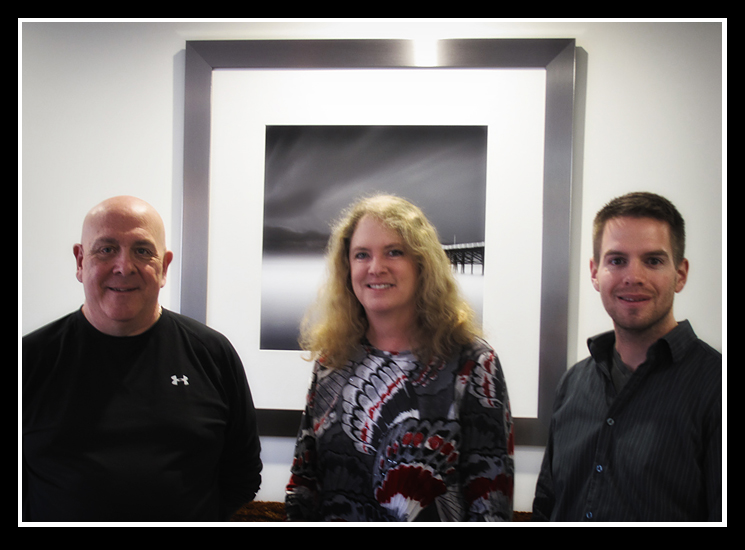
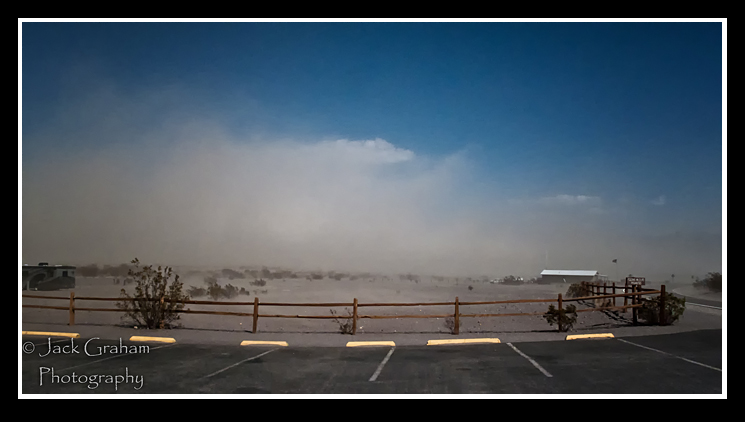
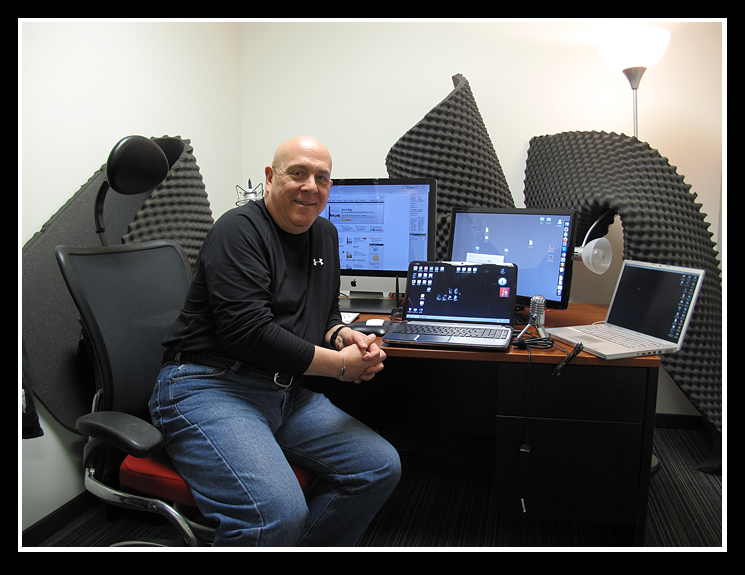
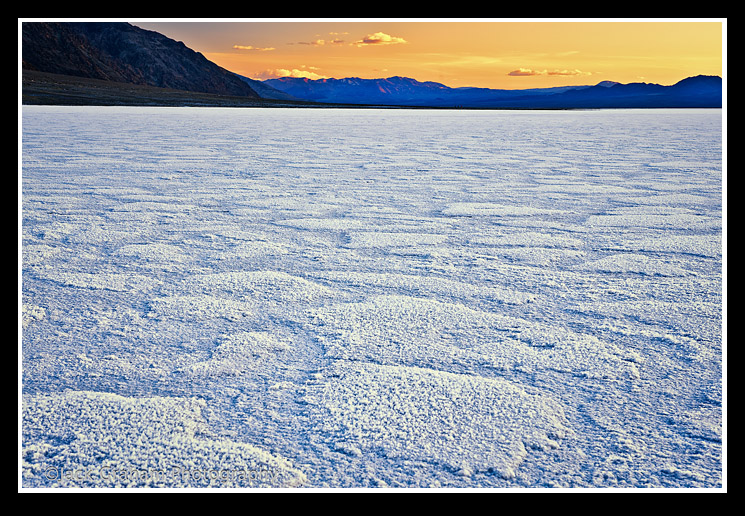
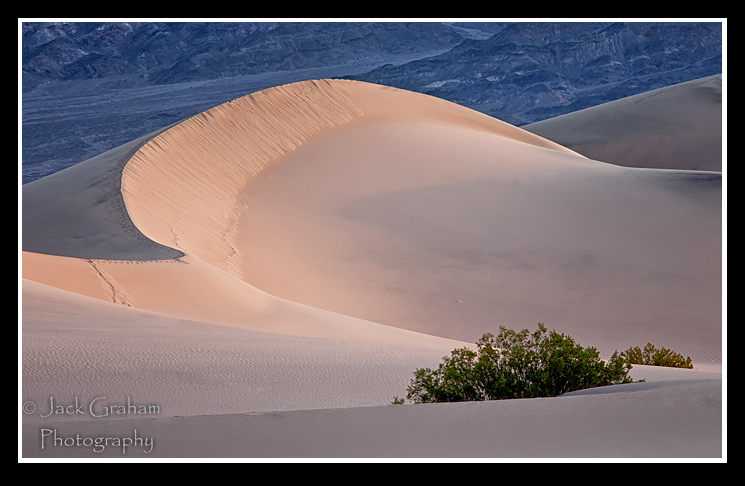
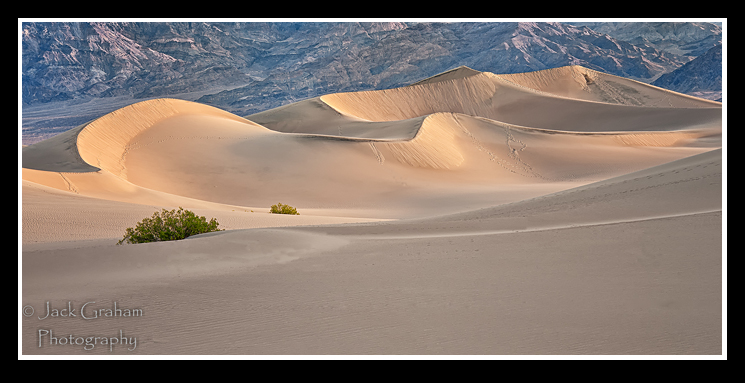
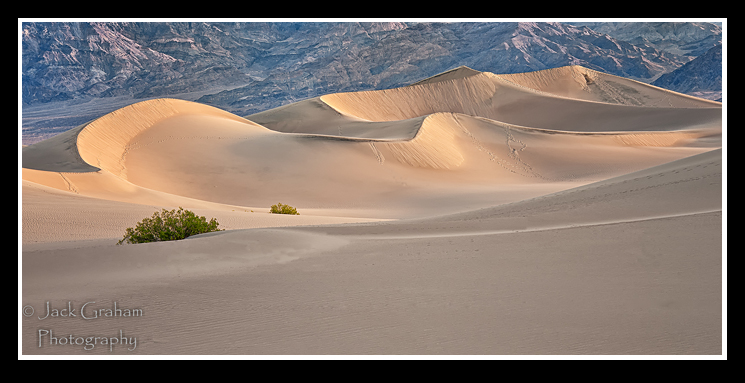
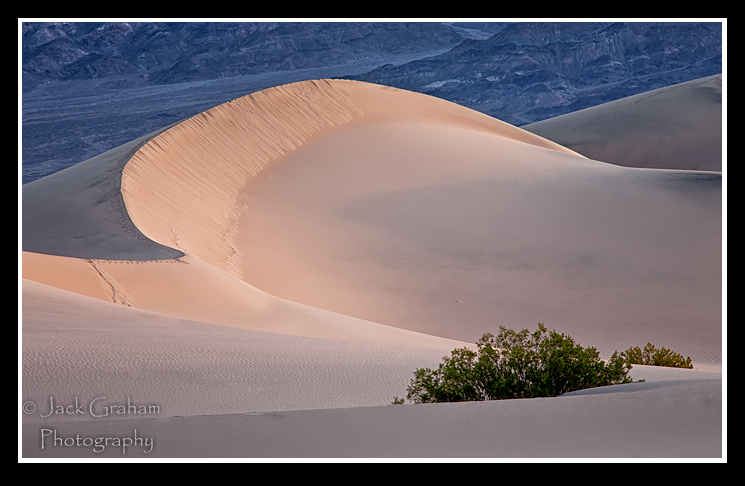
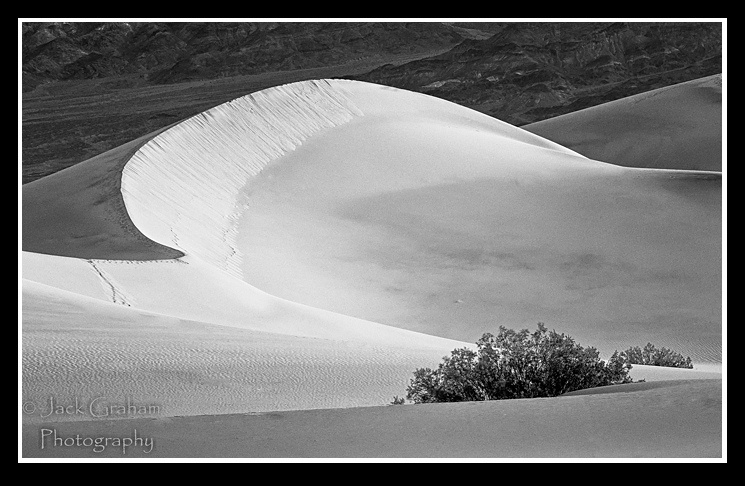
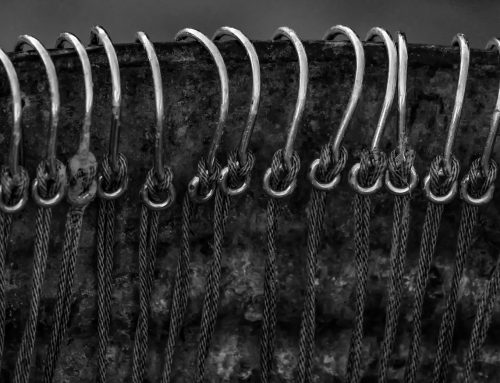
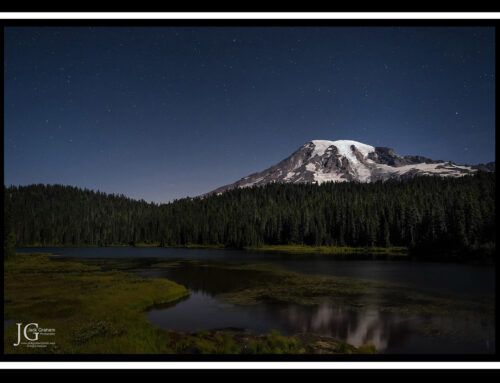

[…] concerning some aspects of photographing in Death Valley can be found here (click links below) ARTICLE 1 “Which One Works” #5 — Death Valley National Park ARTICLE 2 The complete […]